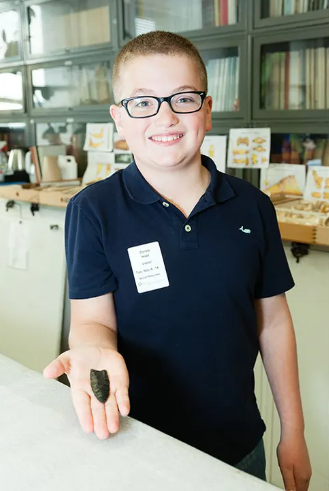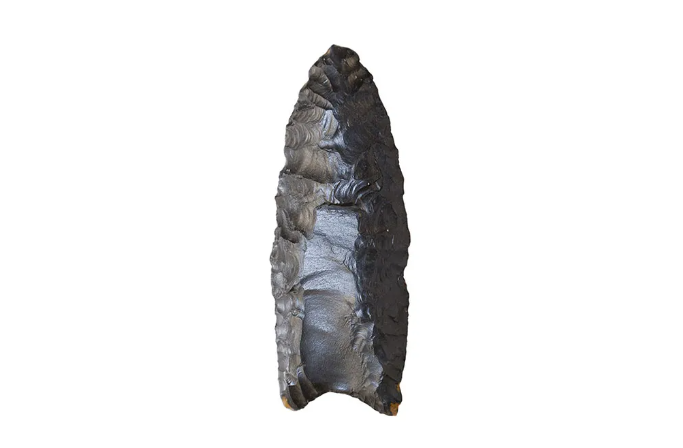For 10-year-old Noah Cordle, a family vacation to the New Jersey shore last summer brought an extraordinary surprise. While boogie boarding in the ocean, he felt something unfamiliar brush against his leg. “It didn’t feel like any of the other shells,” he later remarked. Reaching down into the water, the young boy from Virginia grasped a charcoal-hued, palm-sized object. Without his glasses on, it appeared to be a giant shark tooth or ancient arrowhead.

As it turns out, Cordle had stumbled upon a rare 14,000-year-old Clovis point – a hunting tool used by some of the earliest Native Americans. His serendipitous find left archaeologists amazed. “I thought it was a waste of time,” admitted Brian Cordle, Noah’s skeptical father. “I was a nonbeliever, but they converted me.”
The intact relic had likely been buried for millennia until Hurricane Sandy unearthed it in 2012. Efforts to restore the New Jersey beaches after the devastating storm apparently relocated the artifact into Noah’s path. “You can lay out Clovis points from one end to the other, from California and now New Jersey, and look at them and study them side by side,” remarked Smithsonian curator Pegi Jodry. Noah’s point marked the first in the museum’s collection originating from the Garden State.

Noah later visited the Smithsonian’s National Museum of Natural History to meet with archaeologists and donate his rare find. Dennis Stanford, the museum’s expert in Paleoindian artifacts, displayed the ancient tool’s versatility by demonstrating how it would have been attached to a replica spear. “It’s been used and re-sharpened several times,” he told an awestruck Noah, whose only response was a stunned “Whoa.”
What Makes Clovis Points Special?
Dating back 13,500-14,000 years, Clovis points are signature artifacts of some of the earliest peoples in North America. The name comes from the first excavated examples, found near Clovis, New Mexico in the 1920s and 1930s. Experts like Stanford consider Clovis people to be among the first Americans.
Typically made of jasper, obsidian, or chert, the distinctive bifacial points feature a fluted base and are skillfully shaped through pressure flaking. Ancient hunters would attach these sturdy projectile points to wooden spears and use them to take down large prey like mammoth, bison, and mastodon. Clovis points helped provide the protein needed to fuel nomadic hunter-gatherers across the Americas.
Noah’s example, potentially made of silicate, is stained black from millennia submerged in the Atlantic’s salty waters. The museum plans to conduct analyses to learn more about its mineral composition and precise origins. Stanford believes it dates to the very end of the Clovis era. Rising sea levels inundated many coastal sites as the Ice Age ended, leaving artifacts like Noah’s lost beneath the waves until chance ocean events rediscover them.
Promising Future in Archaeology
Already fascinated by ancient human history, Noah’s instant connection with the distant past bodes well for his future. The fifth grader lists science as his favorite subject and has actively hunted for arrowheads since learning the hobby from his late grandfather. Though unsure of his career goals, Stanford sees potential for Noah to follow in his archaeological footsteps. After all, Stanford found his first arrowhead at age nine – and the rest is history.
For now, Noah’s rare donation will help researchers better understand Clovis technology and early American life. Despite their rarity, Clovis points do occasionally wash up intact on shore – but beachcombers usually seek them out deliberately. As Stanford notes, “That’s never happened to anybody that I know of. You gotta be in the right place at the right time or it will disappear just like that. He was really lucky.” Thanks to one fateful ocean encounter, a once-in-a-lifetime stroke of luck for a fifth grader became an invaluable glimpse into America’s deep past.
(Information, images and quotes adapted from Smithsonian Magazine)

